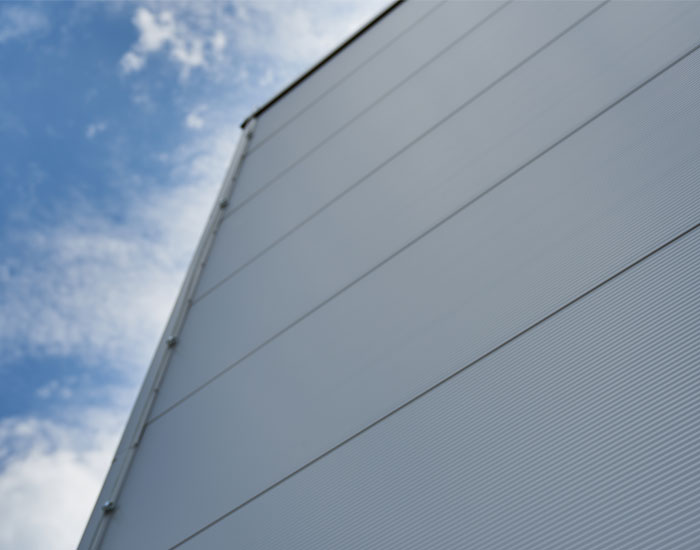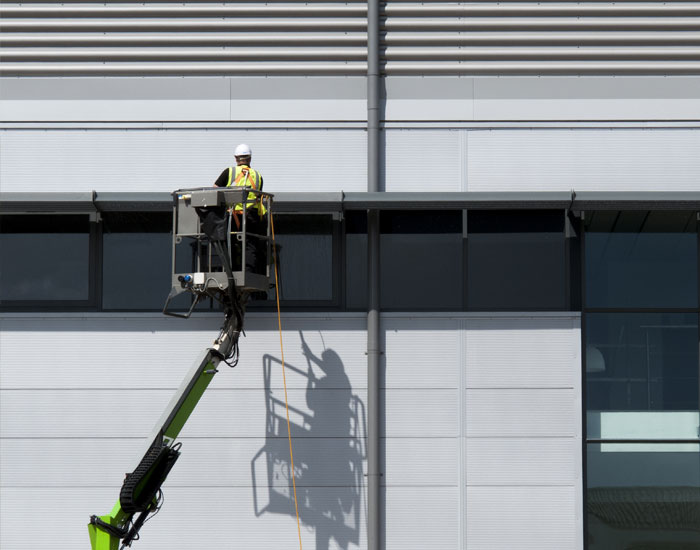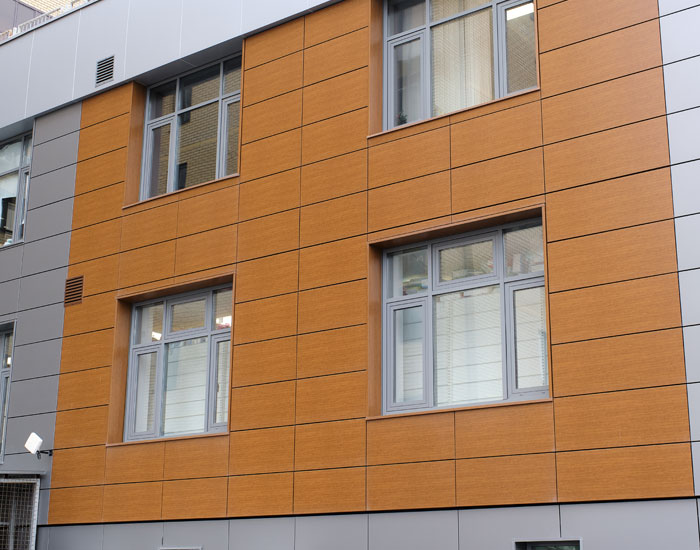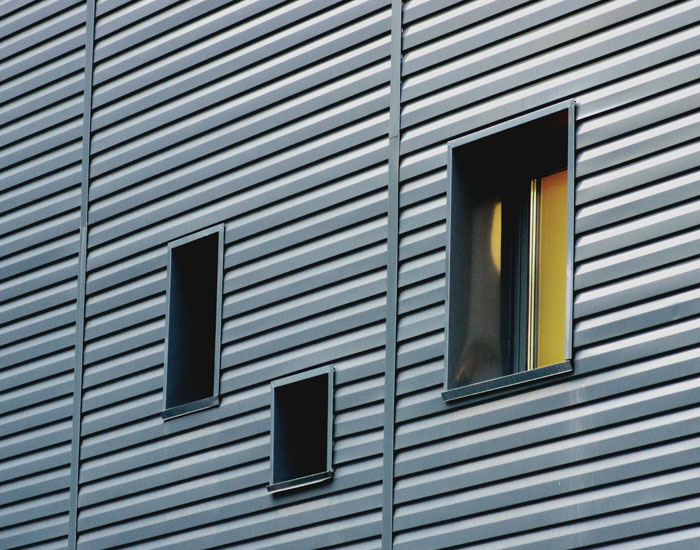
What is Cladding? What Does Cladding Mean?
The dictionary definition of the word ‘cladding’ is, “a covering or coating on a structure or material.” It is also often known as a facade. What this means in a practical, real-world sense is that cladding is an outer skin that is applied for improved aesthetic purposes, but in the case of, say, a high-rise tower building, it’s also there to improve the building’s thermal energy efficiency and act as a fire deterrent.

What Types of Cladding Are There?
Because cladding isn’t load-bearing, it can be incorporated into a building’s design or can be fitted retrospectively. This means that there are many different types of cladding systems available and the sheer number of materials that can go into making them can be incredibly complex.
The thermal insulation that most cladding for buildings will contain either minerals such as stone, foam or wool. The cladding panels themselves can be made from wood, metal, brick or vinyl, or even a composite such as aluminium composite material (ACM) which is made up of two aluminium skins bonded to a non-aluminium core, or high-pressure laminate (HPL) which is made by pressing layers of wood or paper together and then bonding them together with heat.

How Cladding Can Be Dangerous
Some cladding systems have an open cavity inbuilt in order for the material to breathe. If there is a fire then this cavity acts as a chimney and forces the fire vertically up the building.
Depending upon the materials, or the combinations of materials that are used in the construction of the cladding, this can make them highly combustible. Exposing these materials to a flame can mean that fire spreads rapidly, and if the cladding is on the exterior of a building then this can be catastrophic. Nowhere is this better illustrated than the Grenfell Tower tragedy of 2017.
However, shortly after Grenfell, the building regulations were amended to ensure that this never happens again.

Building Regulations for Cladding
A ban on using combustible materials on the exterior walls of buildings that are over 18 metres tall and have more than one residence was introduced in 2018. Also, fire risk assessments now have to include exterior walls. Buildings that have been affected by this ruling include:
-
Hospitals
-
Care Homes
-
Student accommodation
-
Residential tower blocks

Cladding Fire Safety
Almost every cladding system has some form of fire preventative measures built into them, but the best cladding fire safety should be reserved for the exterior of buildings. Any cladding that you add to the exterior of a building has to have passed stringent combustibility tests.
The best cladding for fire safety incorporates mineral-based materials, which are extremely resistant to high temperatures. Those systems that incorporate a cavity now include an intumescent strip, which expands under the application of heat, sealing the cavity so the ‘chimney effect’ cannot happen and the vertical spread of the fire is reduced dramatically.
Cladding For Buildings
Because there are many different materials to make cladding for buildings, they all have unique combustibility thresholds. uPVC cladding, for example, has a Euroclaas rating of C or D, meaning that it is highly combustible. When it comes into contact with fire, not only will it warp and melt, but it gives off toxic fumes that are hazardous to humans.
Composite cladding, by comparison, is made from recycled wood and High-Density Polyethylene, so while it will initially smoke heavily if it comes into contact with fire, it won’t warp and drip toxic droplets, making it a safer choice of fire-resistant building cladding.

Cladding and Passive Fire Protection
Cladding fire safety is critically important if it is being applied to the exterior of a building. It has to pass strict combustion testing and then it has to be installed in the correct manner. Here at JMPFP, we’re passionate about teaching people the practicalities of passive fire protection as well as consulting businesses, which is why we offer a complete range of passive fire solutions, ranging from fire boarding to fire compartmentation surveys
If you would be interested in learning more about our passive fire protection training courses, or any of the other passive fire protection services that we offer, then get in touch today.
Alternatively, speak to an expert right away by calling 0151 329 3230